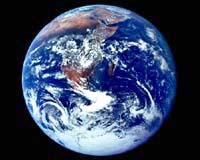
 |
Hopes were fading that rescuers would find any more survivors in hard-hit towns along the border of the two countries, which share the mountainous island of Hispaniola.
This small Dominican town has lost 389 people -- four more than previously reported -- since the Soleil river overflowed May 24. About 300 people are still missing and more than 5,000 were left homeless.
"We believe in God and in generous souls to build a new Jimani," relief coordinator Jose Ramon de la Cruz, who is a priest, told AFP.
One of the most devastated areas was hit Saturday by a mild earthquake, further hampering international rescuers racing to deliver aid to the injured and homeless. Forecasters warned of more rain to come and possible mudslides.
With clean drinking water at a premium and the widespread rupture of sewage lines, authorities said there was the added worry of outbreaks of disease.
Helicopters spread disinfectant over the town of Jimani, 280 kilometers (175 miles) southwest of the capital to prevent the spread of disease.
Rescuers searched for bodies eight kilometers (five miles) east of Jimani in Lake Enriquillo, where corpses could be seen floating in the water.
The National Center for Emergencies said 410 people have died in the Dominican Republic, increasing its death toll by nine, while Haitian officials put their death toll at 996 after finding 404 bodies.
Between the two countries, 1,406 people are known to have died and many of have been buried in mass graves. Nearly 30,000 people have been forced from their homes.
"People have not only economic needs, but psychological as well, for a trauma that is difficult to overcome," De la Cruz said.
An army of rescuers, firefighters and the Red Cross dug into mud-covered homes and streets looking for survivors, although hopes were all but gone of finding anyone alive six days after the floods hit.
De la Cruz said a "new Jimani" will be built elsewhere.
"We cannot even think of reconstruction because conditions are such that people cannot stay here even provisionally. We have to think about building in a new area," he said.
De la Cruz said Japan had donated 100,000 dollars. The United States sent 50,000. France sent thousands of meals and military tents, while the United Nations promised 100 tents.
With roads cut off, emergency relief teams struggled to get to the worst-hit villages, which are underneath as many as three meters (10 feet) of water.
With more rain expected, Dominican authorities warned people to stay away from low-lying areas near rivers and valleys.
Spanish State Secretary for Cooperation Leire Pajin said her country would ask the EU to provide reconstruction aid to the two countries.
Spain announced it will deliver 30 tonnes of material next week, while the UN development mission in the Dominican Republic will donate about 750,000 dollars for people who have lost their homes.
The Caribbean Community said it will work through the Barbados-based Caribbean Disaster Emergency Relief Agency to contribute to the relief effort.
In Haiti, floods displaced 16,222 persons, 10,000 of whom are in the area of Mapou Belle-Anse and 6,000 in Fond-Verrettes, where medical teams and rescue workers set up aid centers.
From Port-au-Prince, US military helicopters shuttled drinking water, food and temporary shelter to the affected areas.
In Mapou, thanks to a US helicopter carrying an inflatable boat, a team of French Red Cross workers and Doctors without Borders helped Haitian rescuers recover bodies and animal carcasses from the water.
TERRA.WIRE |